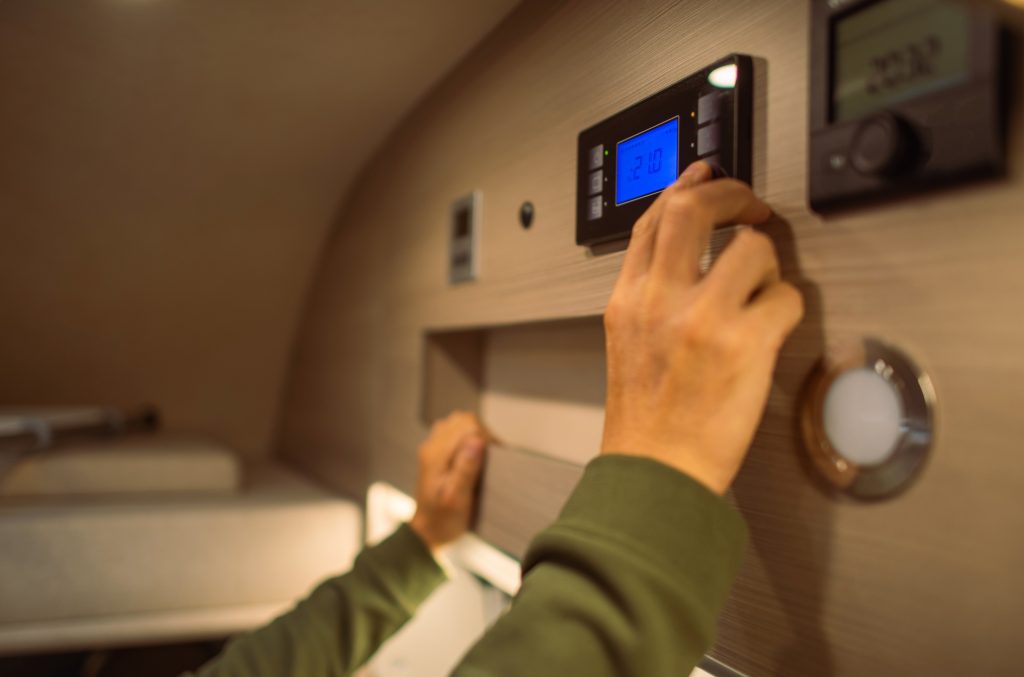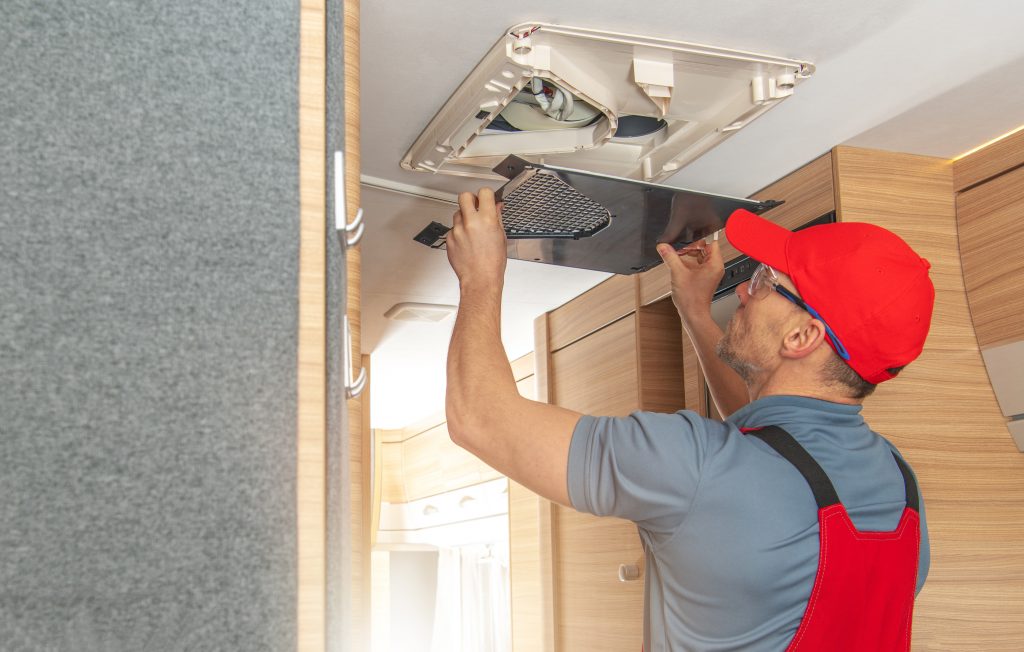How To: Choosing and Maintaining Your RV Air Conditioner
Embarking on an RV adventure is an experience like no other. To ensure your comfort during those hot summer days, a high-quality RV air conditioner is essential. In this comprehensive guide, we’ll cover everything you need to know about RV air conditioners, from selecting the perfect unit to maintaining it for optimal performance.
Let’s dive in!
Table of Contents
- Types of RV Air Conditioners
- Selecting the Perfect RV Air Conditioner
- Installation Tips for Your RV Air Conditioner
- Energy Efficiency and Green RV Air Conditioners
- Maintaining Your RV Air Conditioner
- Troubleshooting Common RV Air Conditioner Issues
- Upgrading and Replacing Your RV Air Conditioner
Types of RV Air Conditioners
There are three main types of RV air conditioners, each with its own unique features and benefits:
- Rooftop Air Conditioners: These are the most common and popular type of RV air conditioner. Mounted on the roof of your RV, they save valuable interior space and distribute cool air evenly throughout the cabin. They come in both ducted and non-ducted varieties.
- Portable Air Conditioners: These units are compact, lightweight, and easy to move, making them ideal for smaller RVs or occasional use. They require a vent to expel hot air but can be quickly set up and removed as needed.
- Window Air Conditioners: These units are installed in a window or custom opening in your RV, providing a budget-friendly option. They are less energy-efficient and can be noisier than other types, but they are easy to install and replace.
Selecting the Perfect RV Air Conditioner
When choosing an RV air conditioner, consider these factors to find the best unit for your needs:
- Cooling Capacity (BTUs): The cooling capacity of an air conditioner is measured in British Thermal Units (BTUs). Consider the size of your RV and the climate you’ll be traveling in to determine the appropriate BTU rating. A general rule of thumb is 13,500 BTUs for a 30-foot RV.
- Energy Efficiency Ratio (EER): The EER is a measure of an air conditioner’s efficiency, calculated by dividing its BTU rating by its wattage. Higher EER ratings indicate greater efficiency.
- Noise Level: Consider the noise level of the air conditioner, as excessive noise can be disruptive during your RV adventures. Look for units with a noise level of 60 decibels or lower.
- Compatibility: Ensure that the air conditioner you choose is compatible with your RV’s electrical system, as well as any existing ductwork or vents.
Installation Tips for Your RV Air Conditioner

Proper installation of your RV air conditioner is crucial for optimal performance and longevity.
Here are some tips to help you successfully install your unit:
- Understand the Installation Process: Familiarize yourself with the installation procedure by carefully reading the manufacturer’s manual. Pay attention to any specific recommendations, requirements, or warnings to ensure a smooth and correct installation.
- Gather Necessary Tools and Supplies: Compile a list of all required tools and materials needed for the installation, such as screwdrivers, drill bits, mounting brackets, sealants, and electrical wiring. Having everything ready in advance can streamline the process and prevent delays.
- Inspect and Prepare the Area: Thoroughly examine the installation site for potential issues, such as damage, leaks, or obstructions. If you’re installing a rooftop unit, ensure that the roof is structurally sound and can support the weight of the air conditioner. Clean the area and remove any debris to create a suitable surface for installation.
- Safety Precautions: Prioritize safety when working on your RV, especially when dealing with rooftop installations. Always have a partner to assist you and use caution when climbing or working on the roof. Additionally, disconnect the power supply to your RV before handling any electrical components.
- Proper Alignment and Placement: Position the air conditioner unit correctly by aligning it with the designated opening or mounting brackets. Ensure that it is level and secure to prevent issues with air circulation or potential damage from movement during travel.
- Secure and Seal the Unit: Follow the manufacturer’s guidelines for securing the air conditioner to your RV. Use the recommended fasteners and mounting hardware to ensure a stable and secure installation. Apply sealants, gaskets, or weatherproofing materials as instructed to prevent air leaks and water intrusion.
- Connect Electrical Components: Carefully connect the air conditioner’s electrical components, such as the power supply, thermostat, and any control panels, according to the manufacturer’s instructions. Double-check all connections for accuracy and security to prevent potential malfunctions or electrical hazards.
- Test the System: Once the installation is complete, reconnect the RV’s power supply and test the air conditioner to ensure it’s functioning correctly. Check for proper airflow, temperature control, and any unusual noises or vibrations. Address any issues before embarking on your next RV adventure.
- Maintain Proper Ventilation: Ensure that your RV’s ventilation system is compatible with the newly installed air conditioner. This may involve adjusting vents, ductwork, or airflow pathways to optimize cooling efficiency and comfort.
By following these installation tips, you can successfully install your RV air conditioner for a comfortable and enjoyable travel experience. Proper installation not only ensures efficient cooling performance but also extends the lifespan of your air conditioning unit.
Energy Efficiency and Green RV Air Conditioners

In today’s environmentally conscious world, it’s essential to consider the energy efficiency and eco-friendliness of your RV air conditioner. By selecting a green RV air conditioner, you can reduce your carbon footprint, conserve energy, and save on operating costs.
Here are some features to look for when choosing an energy-efficient air conditioner:
- High EER Ratings: The Energy Efficiency Ratio (EER) is a vital metric that measures the cooling efficiency of an air conditioner. A higher EER rating means that the unit consumes less energy to provide the same cooling output. Look for models with EER ratings above the industry average to ensure optimal energy efficiency.
- Variable Speed Compressors: Traditional compressors operate at a fixed speed, cycling on and off to maintain the desired temperature. In contrast, variable speed compressors can adjust their speed based on cooling demand, resulting in reduced energy consumption and more consistent temperature control. Seek out air conditioners featuring these advanced compressors for enhanced efficiency.
- Programmable Thermostats: A programmable thermostat enables you to set the desired temperature and operating schedule for your air conditioner, minimizing energy waste when you’re away from your RV or during cooler periods. Look for models with user-friendly thermostats that offer customization options and smart features.
- Energy Star Certification: Energy Star certified air conditioners meet the strict energy efficiency guidelines established by the Environmental Protection Agency (EPA). These models have been tested and verified to consume less energy than their non-certified counterparts, reducing your environmental impact and lowering your energy bills.
- Efficient Air Filters: Energy-efficient air conditioners often feature advanced air filters that improve airflow and reduce energy consumption. Look for models with washable or reusable filters that promote better air circulation and require less frequent replacement.
- Insulation and Sealing: Proper insulation and sealing around your RV air conditioner can significantly impact energy efficiency. Ensure that your unit is well-sealed and insulated to prevent air leaks and heat transfer, which can strain the air conditioner and increase energy consumption.
Maintaining Your RV Air Conditioner

Proper maintenance is essential for ensuring the optimal performance and longevity of your RV air conditioner. Regular upkeep can prevent potential malfunctions, improve energy efficiency, and extend the life of your unit.
Below is an in-depth guide to essential RV air conditioner maintenance tasks:
- Clean or Replace Filters: Dirty filters restrict airflow, causing your air conditioner to work harder and consume more energy. Clean reusable filters or replace disposable ones at least once a month during periods of heavy use. This will maintain optimal airflow and efficiency, while also improving indoor air quality.
- Inspect and Clean Coils: The evaporator and condenser coils play a crucial role in the cooling process. Over time, dirt and debris can accumulate on the coils, reducing their efficiency and potentially causing damage. Regularly inspect and clean the coils to ensure optimal heat exchange and prevent wear and tear.
- Clear Drain Lines: Your air conditioner’s drain lines help remove condensation produced during the cooling process. Blocked or dirty drain lines can cause water to back up, leading to water damage and mold growth. Periodically check and clear the drain lines to prevent these issues.
- Check Seals and Gaskets: The seals and gaskets around your air conditioner help prevent air leaks and water intrusion. Inspect them regularly for signs of wear, damage, or deterioration, and replace them as needed to maintain an efficient and watertight system.
- Inspect Electrical Components: Electrical issues can cause your air conditioner to malfunction or fail. Regularly check the unit’s electrical connections for signs of corrosion, frayed wires, or loose connections. Address any problems immediately to avoid potential hazards or costly repairs.
- Lubricate Moving Parts: Lubricating the air conditioner’s moving parts, such as fan motors and bearings, can reduce friction and prevent wear. Consult the manufacturer’s manual for recommended lubrication intervals and compatible lubricants.
- Check Refrigerant Levels: Low refrigerant levels can negatively impact your air conditioner’s cooling capacity and efficiency. Inspect refrigerant levels periodically and recharge the system as needed, according to the manufacturer’s instructions.
By following this comprehensive maintenance guide, you can keep your RV air conditioner operating at peak performance, ensuring a comfortable and enjoyable RV experience.
Regular maintenance not only prevents potential issues but also contributes to a longer lifespan for your air conditioning unit.
Troubleshooting Common RV Air Conditioner Issues

Encountering issues with your RV air conditioner can be frustrating, but many problems can be resolved through simple troubleshooting. Below is a detailed guide to addressing common RV air conditioner issues:
- No Power: If your air conditioner is not turning on, first check the circuit breaker, power cord, and electrical connections to ensure the unit is receiving power. Reset the breaker if necessary and inspect the power cord for any damage or loose connections.
- Insufficient Cooling: If your air conditioner is not cooling effectively, inspect the filters, coils, and refrigerant levels for potential issues. A dirty filter or coil can restrict airflow, while low refrigerant levels can impact cooling capacity. Clean or replace filters, clean the coils, and recharge the refrigerant as needed.
- Unusual Noises: Investigate any unusual noises, such as rattling or buzzing, which could indicate loose components, debris, or a failing motor. Tighten any loose screws or bolts, remove debris, and consult a professional if the motor is suspect.
- Leaking Water: If water is leaking into your RV, examine the drain lines, seals, and gaskets for any damage or blockages that could be causing the issue. Clean or replace the drain lines and seals as necessary to prevent water intrusion.
- Unit Cycles On and Off Frequently: Frequent cycling can be a sign of a dirty filter, malfunctioning thermostat, or an improperly sized air conditioner for your RV. Clean or replace the filter, recalibrate or replace the thermostat, and consider upgrading to a properly sized unit if needed.
- Frozen Evaporator Coil: A frozen evaporator coil can result from restricted airflow, low refrigerant levels, or a malfunctioning fan motor. Inspect and clean the filters, coils, and fan motor, and recharge the refrigerant if necessary.
- Overheating: If your air conditioner is overheating, it could be due to a dirty condenser coil, insufficient ventilation, or a malfunctioning fan motor. Clean the condenser coil, ensure proper ventilation around the unit, and inspect the fan motor for issues.
In some cases, consulting a professional technician may be necessary, but many problems can be resolved with simple DIY solutions.
Upgrading and Replacing Your RV Air Conditioner

When it’s time to upgrade or replace your RV air conditioner, consider the following steps:
- Assess Your Needs: Reevaluate your cooling requirements, taking into account any changes in your RV or travel habits since your last air conditioner purchase. This will help you choose the most suitable unit for your current needs.
- Research Options: Explore the latest models and features on the market, including energy-efficient and environmentally-friendly options. Read reviews and consult with fellow RV owners for recommendations.
- Budget: Determine your budget for a new air conditioner, taking into account the cost of the unit itself, as well as any installation or additional materials required.
- Installation: Decide whether to install the new air conditioner yourself or hire a professional. If you choose to install it yourself, be sure to carefully follow the manufacturer’s instructions and take necessary safety precautions.
- Proper Disposal: When replacing your old air conditioner, dispose of it responsibly. Many components, such as refrigerant and metals, can be recycled. Check with local recycling centers or contact the manufacturer for proper disposal instructions.
In conclusion, selecting the right RV air conditioner is crucial for a comfortable and enjoyable RV experience. By understanding the different types of air conditioners, choosing the perfect unit, and maintaining it properly, you can ensure a cool and refreshing environment during your travels.
With this comprehensive guide, you’re now equipped with the knowledge to make an informed decision and keep your RV air conditioner running at peak performance.
Check out RV rentals here at RVnGO!
